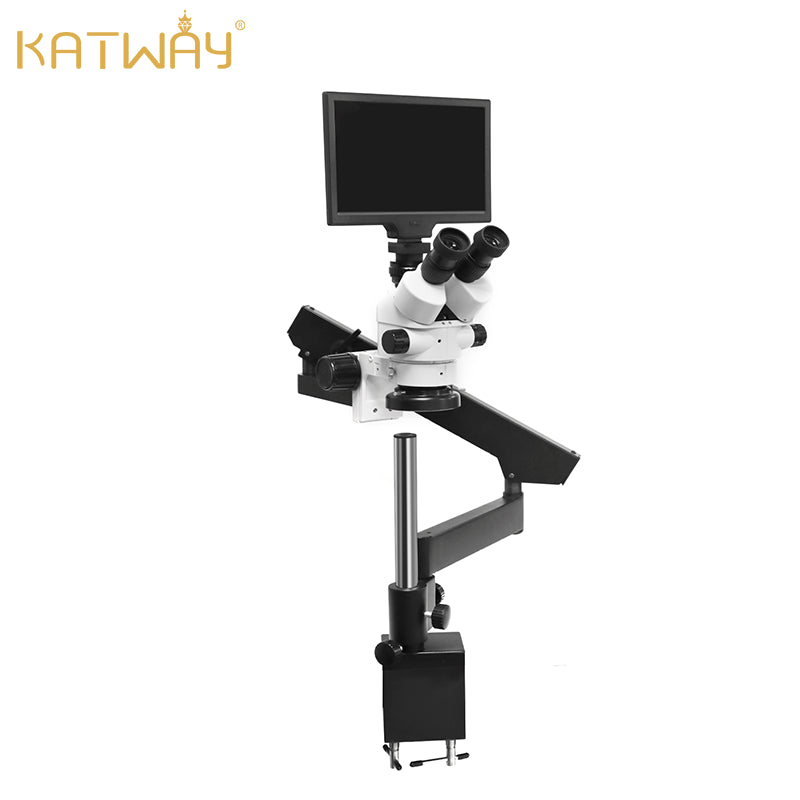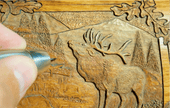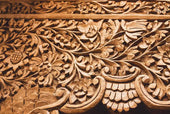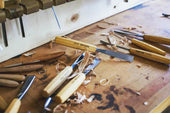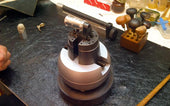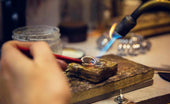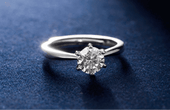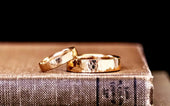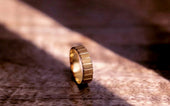What Kind of Microscope Do Jewelers Use?
Microscopes are called the third eye of jewelers. According to a survey of jewelry craftsmanship, 82% of workshops are equipped with professional microscopes. Jewelers usually use high-magnification, high-definition microscopes to inspect and process jewelry. These microscopes can be used to check details, find flaws, carve fine patterns or perform complex inlay work. This article introduces several professional microscopes commonly used in the jewelry industry and their application scenarios.
Why use a microscope instead of a magnifying glass?
Traditional magnifying glass vs modern microscope performance comparison table
| Comparison Dimension | Traditional Handheld Magnifier (10X) | Professional Jewelry Microscope (10X-40X) |
|---|---|---|
| Working Distance | 2-5 cm (close observation required) | 15-20 cm (allows tool manipulation) |
| Field of View | Ø8-10 mm (single observation area) | Ø25-35 mm (scan larger area) |
| Resolution | 200μm detail recognition | 5μm ultra-fine structure observation |
| Lighting System | Depends on ambient light or headlamp | Ring LED + coaxial light (adjustable brightness: 2000-6500K) |
| Working Duration | 30 minutes (easily causes visual fatigue) | Supports 4+ hours (ergonomic design) |
| Additional Features | None | Image measurement, video recording, depth of field synthesis |
| Typical Applications | • Initial gemstone screening • Daily jewelry inspection • Customer showcase |
• Micro prong alignment • Laser engraving verification • Metal stress analysis |
| Accuracy Validation Case | Cannot identify VS2 diamond inclusions | Clearly observes SI1 feathering |
| Learning Curve | Immediate use | Requires 8-16 hours of professional training |
| Annual Maintenance Cost | $20 (lens replacement) | $300+ (light source/calibration service) |
| Portability | Pocket-sized | Requires special shockproof box (6-12 kg equipment weight) |
Obviously, traditional handheld magnifiers can no longer meet the professional needs of jewelers, and modern microscopes are more efficient in micro-setting, measurement, inspection, etc. Data from Hong Kong jewelry workshops in 2023 showed that craftsmen using stereo microscopes could improve inlay accuracy by 83% (error <0.01mm) compared to those using magnifying glasses, reduce rework rates by 67%, and increase daily production capacity by 40%. The following are several microscopes commonly used by jewelers.
Stereo microscope
A professional jeweler must be equipped with a stereo microscope. It can play an important role in precision setting operations, such as observing the positioning welding of the nail claws below 0.3 mm in micro setting and the arrangement of gemstones in the groove.
Of course, stereo microscopes are also often used to check the subtle defects of some small workpieces. For exquisite works, any defects are unacceptable. Stereo microscopes can detect 10-micron metal fatigue cracks and identify the risk of gem feather extension.
In addition, stereo microscopes can also be used in some precision repair operations. In short, it can see details that are difficult to see with the naked eye.
Technically, it is still quite different from ordinary microscopes:
- Depth of Field: Regular microscope 0.8-1.2mm vs Stereo 3-15mm
- Working Distance: Standard 5cm vs Stereo 10cm (doubling operating space)
- Stereo Parallax: 7°-12° binocular inclination enables 3D imaging (key differentiator)
Gemological microscope
If stereo microscopes are better at dynamic operation and observation, then gem identification microscopes specialize in static detection and analysis. In other words, jewelers often use them to identify the authenticity and processing of jewelry and analyze the quality of cutting.
Using a professional gem microscope can increase the detection efficiency by 40%. For this kind of microscope, it must be equipped with at least 6 or more professional light sources. The light source is the main factor affecting the detection accuracy. In addition to the optical system, its lighting system is the key.
The lighting system must include:
- Dark-field illumination (for internal feature observation)
- Fiber-optic side lighting (surface structure analysis)
- Polarizing filters (birefringence detection)
Taking the detection of ruby as an example, the following is a typical detection process:
- Dark-field illumination at 40x to locate curved growth striations (synthetic characteristics)
- Switch to fiber-optic sidelighting to examine surface pits (filling traces)
- Rotate stage to observe dichroic manifestation
- Activate UV illumination for fluorescence reaction testing
Digital microscope system (with measurement function)
Strictly speaking, this is an advanced system, not a simple microscope. You may see it in some high-end custom jewelers and antique jewelry restoration experts. Its positioning is precise professional customization and meticulous restoration. If you don't understand. After reading the following examples, you will understand the power of digital microscope systems.
High-end custom wedding ring production: It can scan the customer's old ring (0.01mm accuracy) and then automatically match the new gem size and generate the setting processing parameters.
Antique jewelry restoration: Scan the 3D model of missing parts, reverse engineer to generate data parameters for the replacement parts, and then use these parameter data to make replacement parts with various materials to repair these antique jewelry with historical significance and aesthetic value. Christie's auction house used 3D scanning to restore Fabergé eggs.
Of course, it also has the functions of a stereo microscope and a gem identification microscope, so some high-end workshops and professional testing institutions are equipped with such systems. Harry Winston workshop uses it to ensure the 0.05mm tolerance of hidden settings.
The jeweler's third eye
The work of jewelers requires extremely high precision and detail processing. It is difficult to create exquisite works without the help of a microscope. It is also the microscope that gives jewelers the visual ability beyond the physiological limit. It is the jeweler's third eye.
View more related articles
How To Choose a Engraving Vise?
Six Common Casting Process Introduction
Two types of casting machines: the difference between vacuum casting and centrifugal casting




